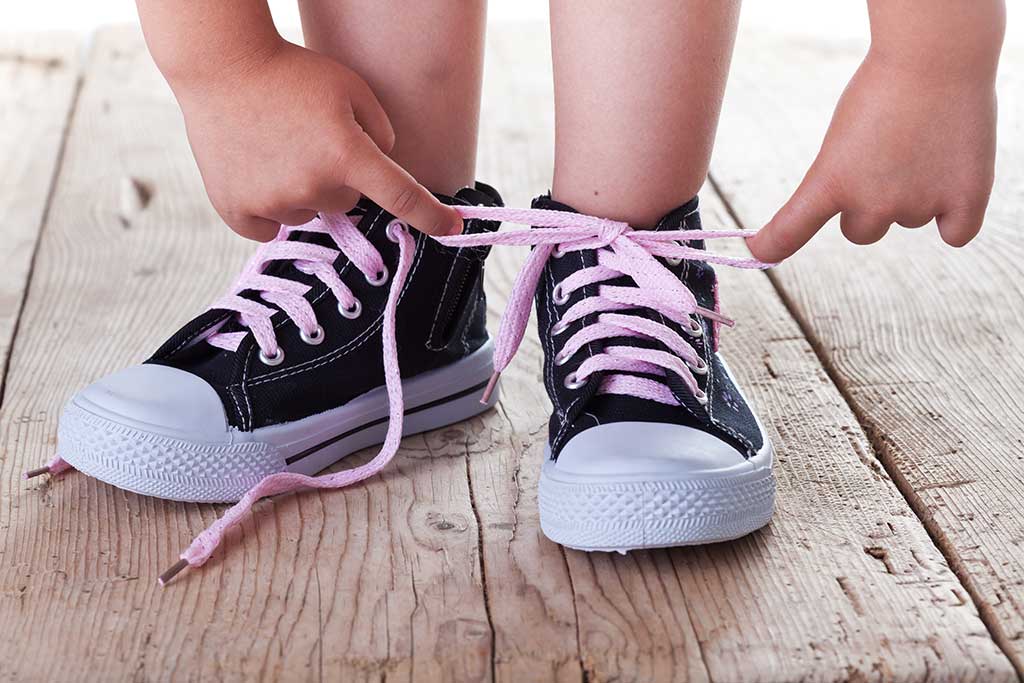Are there any speed lacing methods for kids?

Learning to tie shoes can be a daunting step for a child, but thankfully there are quick tying methods designed to make this process easier and more enjoyable. Wondering what these techniques are and how they can benefit your child:how to tie shoes effectively?
In this guide, we'll explore the different quick lacing methods for children, from simplified classic lacing to elastic laces. We'll also look at the significant benefits, such as improved independence, ease and speed of use, as well as the safety and comfort offered by these techniques.
Finally, we'll provide practical advice for teaching your children to speed lacing, with suitable teaching approaches, tools and resources, as well as a bevy of encouragement to support them in this learning process.

The different quick lacing methods for children
As a parent, you know how difficult it can be to teach your child to tie their shoes. Fortunately, there are several quick lacing methods that make this task much simpler and more fun for younger children. Let's explore these ingenious techniques together.
Simplified Classic Lacing
Simplified Classic Lacing is an ideal method for introducing children to lacing while providing a quick and effective solution. By using tricks like coloured laces or patterns with rigid tips, you can make the process more intuitive and fun. For example, some parents use ‘bunny ears’ to help children remember each step of the knot.
Velcro lacing
For those looking for an even quicker solution, Velcro is a must-have option. Shoes with Velcro straps allow children to fasten their shoes in a jiffy without having to fiddle with the laces. Not only does this method save a considerable amount of time, it also increases safety, as it eliminates the risk of the laces coming undone while your child is playing or running.
Elastic laces
elastic laces represent another practical and popular alternative among modern parents. These innovative laces stretch easily and don't need tying, allowing children to put on and take off their shoes effortlessly. What's more, they offer a comfortable, secure fit all day long. Imagine them as the perfect allies for your children on sports days or school trips.
Have you tried these methods with your little adventurers yet? Each technique has its own benefits and can be adapted according to your child's age and level of fine motor skills.
The benefits of quick lacing methods for children
The quick lacing method for children is more than just a convenience. It's a real asset to their development and everyday life. Imagine your child being able to put their shoes on in the blink of an eye, without frustration or outside help. Isn't that an exciting prospect? Quick lacing methods, such as elastic laces or Velcro, offer a multitude of benefits.
Improved independence
Quick lacing methods encourage children's independence from an early age. By simplifying this everyday task, they gain confidence and independence. For example, Velcro allows little fingers that are still clumsy to manage on their own, boosting their self-esteem.
Easy and quick
One of the main advantages of quick lacing lies in its simplicity and speed of execution. Who hasn't been in a hurry one morning before school? With elastic laces, no more delays caused by untied or badly tied laces! These systems allow children to put on their shoes quickly while ensuring optimum support.
Safety and comfort
So opting for quick lacing methods isn't just a practical matter; it's also a wise choice to promote independence, ensure safety and improve children's day-to-day comfort.
Tips for teaching children quick lacing
Teaching quick lacing to children can seem like a challenge, but with the right techniques and a little patience, it becomes a fun and rewarding activity. Here are a few tips to help you guide your little ones through this adventure.
Adapted teaching approaches
Every child learns differently. Some prefer visual demonstrations, while others respond better to verbal or tactile instructions. To capture their attention, why not turn learning into a game? Use coloured or even glittery laces to make the exercise more attractive. You could also invent a story around lacing: ‘The rabbit who crosses the forest’ where each stage of the knot represents a part of the adventure.
Tools and resources available
There are a multitude of teaching tools available today to facilitate this learning process. From wooden lacing boards to tutorial videos on the Internet, there's no shortage of options. For example:
- Lacing boards: these boards allow children to practise without having to handle their shoes directly.
- Laces with rigid tips: these make it easier to insert into the eyelets and make the process less frustrating.
- Video tutorials: many YouTube channels offer child-friendly videos showing different quick lacing methods.
Patience and encouragement
Learning to lace takes time and lots of repetition. Encourage your child to try regularly, but without pressure. Congratulate them on every bit of progress they make. Why not organise short but frequent sessions? Five minutes a day can make all the difference! And above all, remember that each child progresses at their own pace - what matters above all is that they enjoy learning.
Have you already tried these tips with your children? Perhaps you've discovered a new method that works particularly well for you? Sharing your experiences could inspire other parents looking for effective solutions!
We recommend these other pages:
